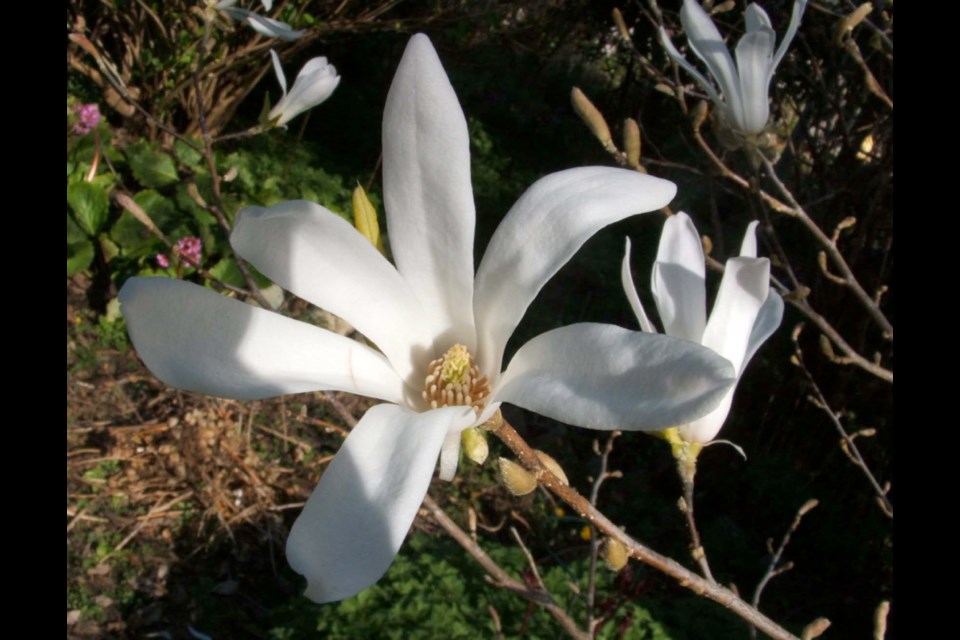Dear Helen: What is your opinion on using wood chips in garden beds? ÔÇö P.N.
I would not use them inside beds, though they are a good pathway covering. Within vegetable plots, I often place a thin layer of wood shavings, the kind used as bedding for animals, in the spaces between plantings. The shavings give a clean surface to walk on while tending the plots and they meld nicely into the soil at the end of the main growing season.
Because I have a few old fence boards on hand, I also use them sometimes as temporary pathways between plots. Placed alongside plantings such as carrots and beets, and the onion plot, which are protected against insect pests with floating row cover, the boards serve a second purpose as they also secure one edge of the fabric cover firmly to the soil.
Dear Helen: A gift flower arrangement I received had ÔÇ£fillerÔÇØ greenery that a florist identified for me as ÔÇ£Israeli ruscus.ÔÇØ Have you heard of it? ÔÇö N.P.
I first encountered ruscus on a garden writersÔÇÖ trip to Holland. One of the stops on the trip was a flower wholesaler, where I admired a container of stems clothed densely with dark green leaves. The greens were identified for me as ruscus, a traditional and classic filler material in flower arrangements, prized for its shapely stems, fine-textured foliage and long vase life.
Ruscus, also known as butcherÔÇÖs broom, is a low-growing evergreen for shade and well-drained soils. When I returned home I managed to find a┬áplant for my garden. That was many years ago. It┬áwould be worthwhile keeping the stems in water to see if they form roots.
Dear Helen: Have you any idea where I might buy dandelion seeds or greens? I use the greens in my morning blended drink. I canÔÇÖt always find them to┬ápurchase. It would be good to have home-grown ones. ÔÇö M.N.
The greens are most often available in health food stores that sell produce, and sometimes at farmersÔÇÖ markets.
West Coast Seeds lists dandelion seeds and recommends eating the young leaves in salads, cooking mature leaves and scattering the bright yellow flower petals over salads.
The Richters Herbs catalogue lists the same, regular dandelion and also French dandelion, a┬áthick-leaved form with tender, fleshy leaves. ÔÇ£topping all other fruits and vegetables for iron content. Enjoy in a spring salad, or cooked like spinach.ÔÇØ
The young greens are at their best harvested in spring, before the plants produce flower stalks. To reduce bitterness in the leaves, some people ÔÇ£blanchÔÇØ the plants by placing some sort of covering, such as an upturned bucket, over them.
Dear Helen: What can I do to help a magnolia that is slowly becoming covered with lichen? When it was planted many years ago it was in a sunny spot, but now it is shaded for much of the day and competing with the roots of nearby shrubs. It is not watered much in summer either. ÔÇö B.A.
Lichen tend to gather on trees and shrubs that are not in good shape because of various stresses such as severe root competition, crowded conditions, poor air circulation, and sunlight exposure or/and moisture supplies inappropriate for the plant.
The best treatment for the lichen is to change the┬áplantÔÇÖs environment. Prune back and perhaps thin out surrounding plants enough to allow for improve light and air access to the magnolia. Remove any dead growth on the magnolia and, if┬áneeded, prune to┬árelieve crowding.
Once that is done, clean the ground under and around the plant. Fertilize, and lay a nourishing compost mulch layer over the area. Water adequately in dry summer weather.
The lichen are not themselves a cause of harm to the plant. They are more a symptom of distress. Mechanical removal with a brush or some other implement is not recommended. The removal is likely to cause more harm than good and has the potential to injure the bark.
Help from Master Gardeners. Victoria Master Gardeners are continuing to offer answers to questions about all aspects of gardening. They will┬ádo this over the phone, by email, text, or other ÔÇ£virtualÔÇØ means. Email them at [email protected]. On their website () is a section of answers to questions asked at their clinics. Access it by clicking on You Asked Us.



